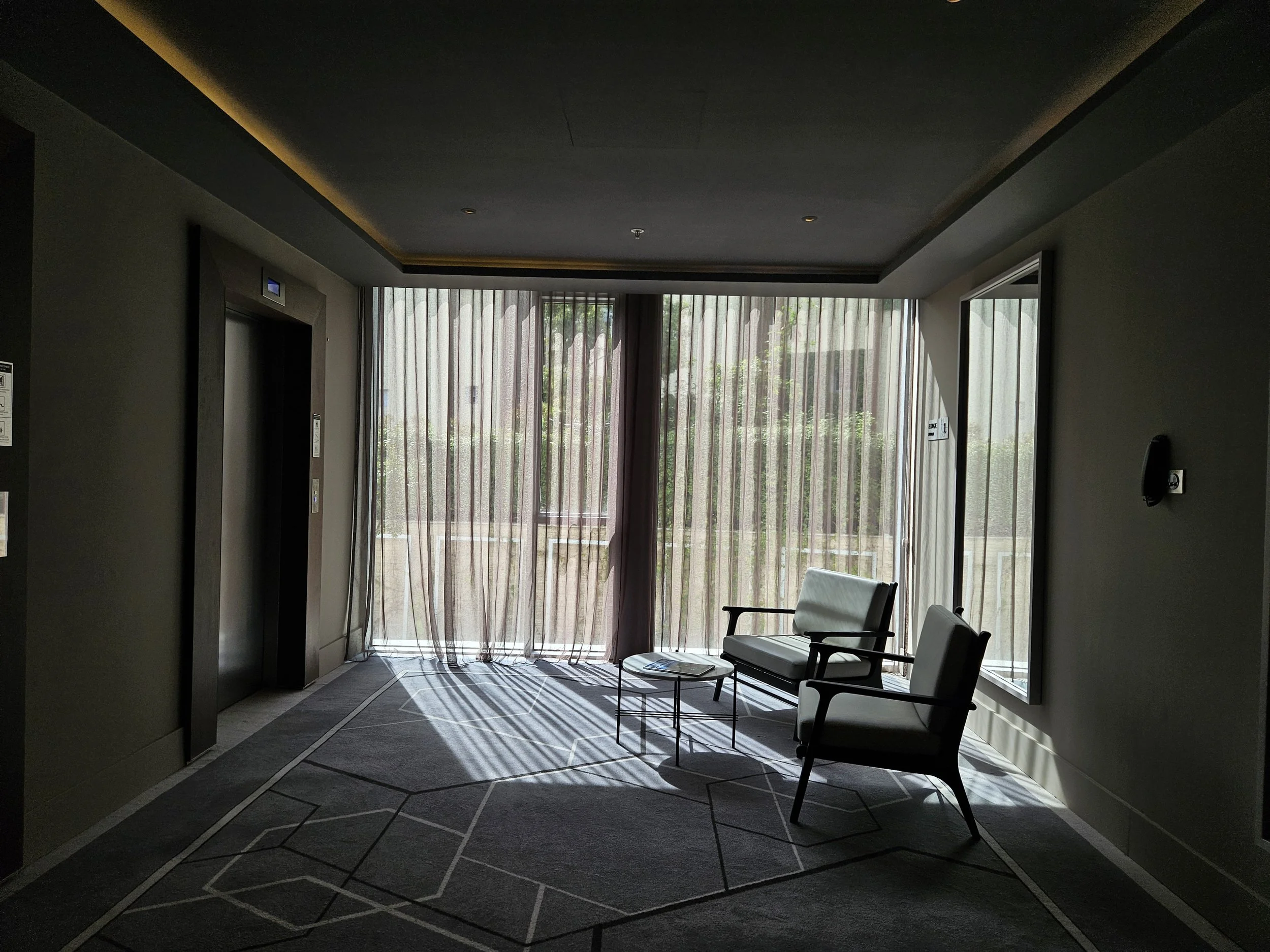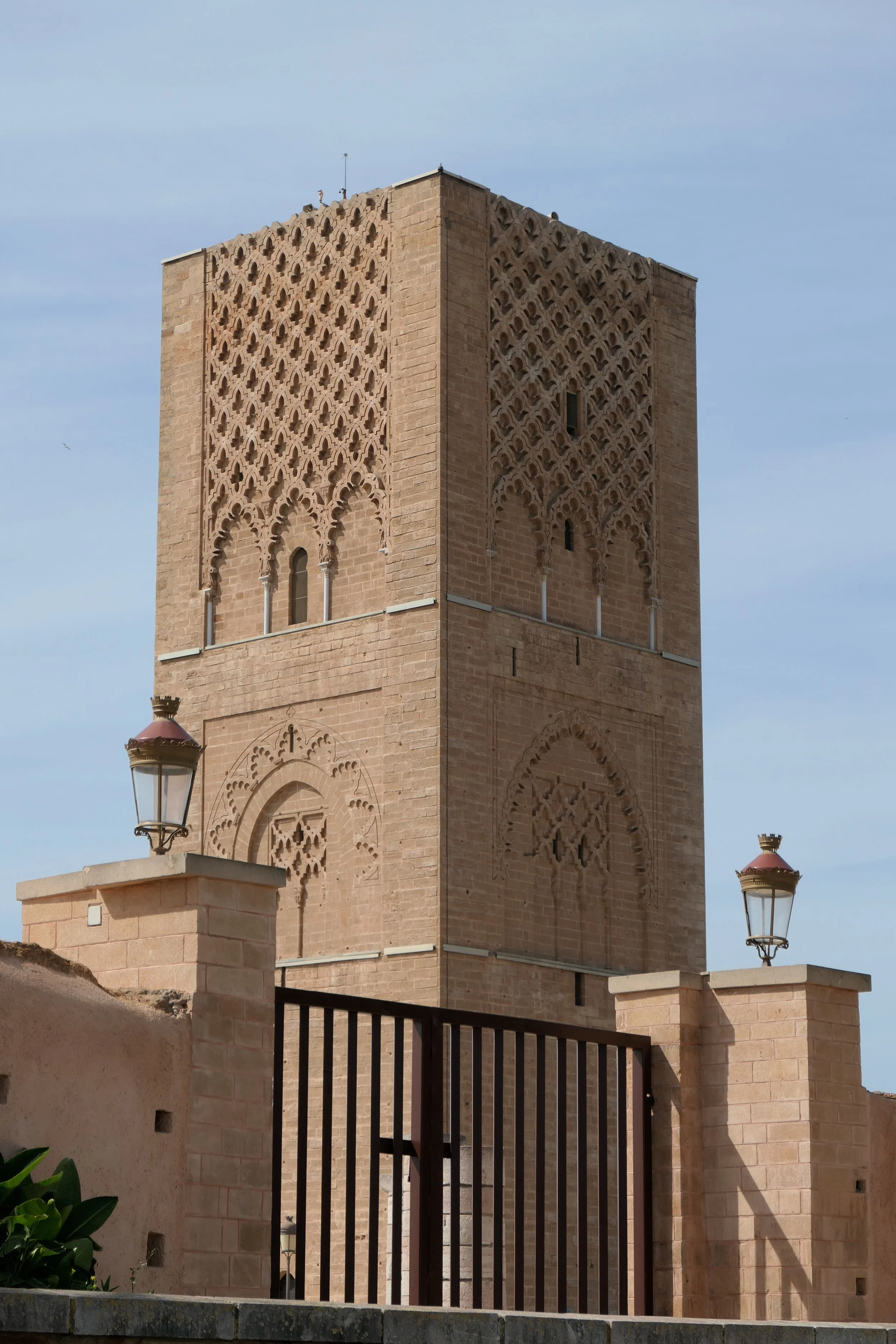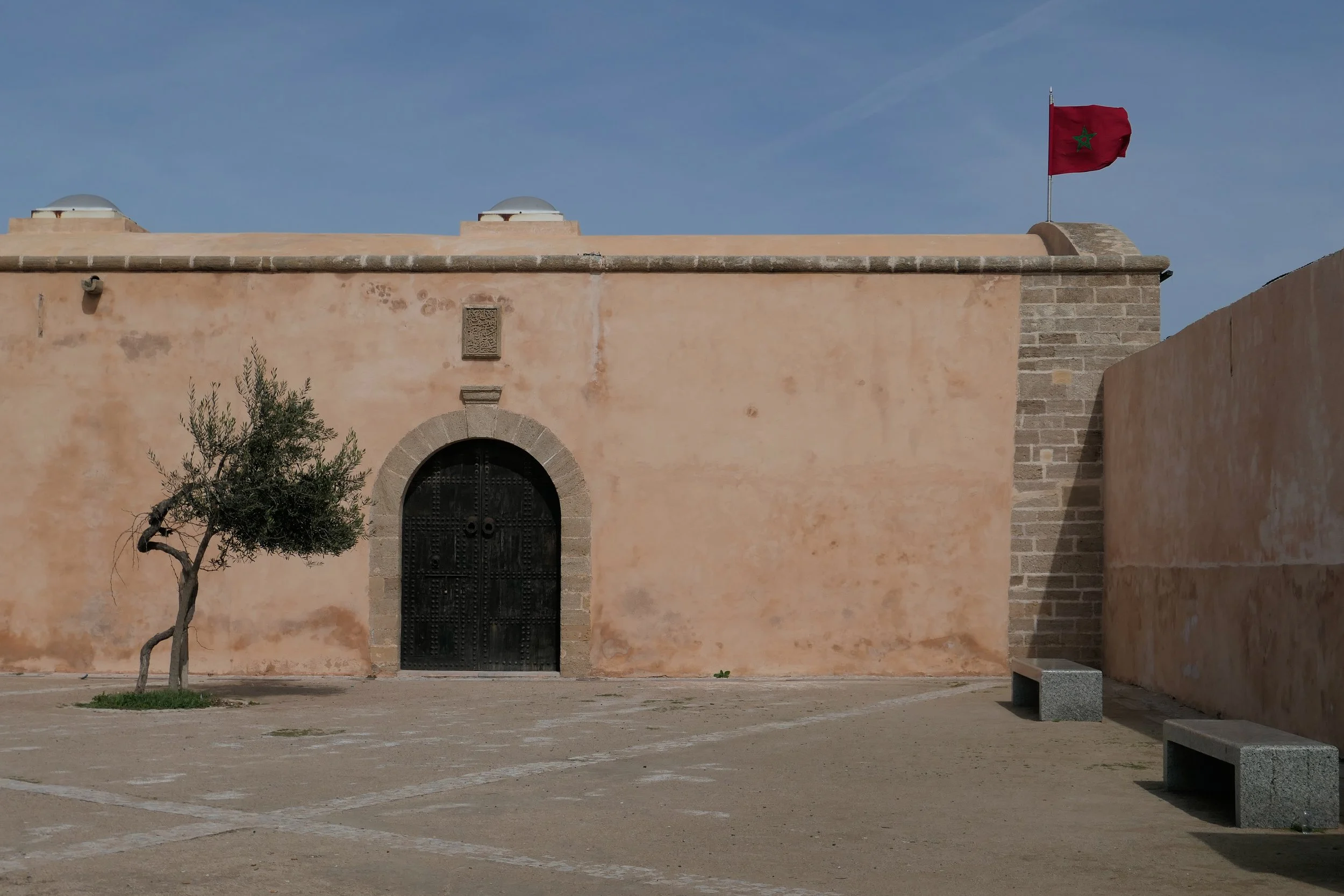Marriott Rabat Hotel Review: A comfortable stay in Morocco’s capital
Rabat, Morocco’s capital, may not always top the list of must-visit destinations, often overshadowed by the energy of Marrakech or the historic charm of Fes. But for those who venture here, perhaps on the way to another city like us, Rabat offers a unique blend of history, coastal beauty, and understated elegance. Choosing the right hotel can make all the difference, and for this trip, we opted for the Marriott Rabat Hotel, a sleek and modern property that’s part of the Bonvoy portfolio of hotels, and connected to the bustling Arribat Center Mall.
Our stay was a mix of business-class efficiency, practical luxury, and convenient access to both urban life and key landmarks. While some aspects stood out as exceptional, there were a few surprises—both pleasant and perplexing. Here’s an inside look at our experience at the Marriott Rabat Hotel.
Arrival & First Impressions
After landing in Casablanca, our private driver (arranged through the hotel) took us straight to Rabat in a Skoda Octavia, a journey that took about an hour and a half. The roads were smooth, the landscapes shifting from coastal views to the well-maintained avenues of the capital. It made me wonder if I should have rented a car and driven myself. One of the things that I worry about is the quality of the infrastructure, and the road from Casablanca to Rabat was perfectly maintained and easy to navigate. Next time, I’ll opt for a rental, but it was nice to have the driver take all the worry out of the transfer.
As we approached the hotel, the first thing that struck me was its modern design—a sleek glass structure that could easily be mistaken for a high-end corporate hub. The Arribat Center, which we visited later in the evening and which is attached to the hotel, added to this urban feel, with its mix of shops, movie theater, and food court buzzing with activity.
The lobby of the Marriott Rabat was spacious and bright, exuding the polished ambiance typical of international five-star properties. It didn’t scream luxury, bit it did raise its voice to say “modern, classy, well taken care of.” It had an open, airy feel, with plenty of seating near Le Café Robuchon, a stylish kiosk offering coffee, pastries, and afternoon tea. Further down the lobby, we spotted Le Grill Robuchon, a French-inspired restaurant that immediately piqued our interest; we were hungry after our flight from Istanbul and drive from Casablanca. The elevators were conveniently located near the concierge desk, and a set of doors led directly to the mall, offering seamless access to shopping and entertainment without the need to step outside.
Check-in was smooth and efficient, handled with warmth by the front desk staff. My Bonvoy Titanium Elite status was acknowledged, granting us access to the M Club Lounge, a space exclusive to elite members and suite guests. As a welcome gift, we found a beautifully arranged plate of chocolates, muffins, and fresh fruit waiting for us in our room—small gestures that always make a difference in first impressions.
The executive suite experience
Initially, we had booked a Standard Room, but after seeing the available options, we decided to upgrade to an Executive Suite for more space. The Marriott Rabat has 188 rooms, and while our suite was the entry-level option, the hotel also boasts Presidential and Diplomatic Suites for those seeking an even grander experience.
Stepping into the suite, the first thing we noticed was the sheer amount of space. A foyer with restroom, separate bedroom, a dedicated living area, and a hallway leading to a well-appointed restroom and closet area made it feel more like a small apartment than a hotel room. The decor was contemporary yet understated, with neutral tones, plush furniture, and sleek, modern touches.
The bed was king-sized and comfortable, with crisp white linens and soft, breathable sheets. The pillows, while luxurious, were a bit too soft for my preference—but that’s just me being picky. While our suite did not have a balcony, it did offer a view of the city, though being on the second floor, the scenery was more of the hotel’s driveway than an expansive skyline.






A thoughtful selection of amenities was included: an espresso machine and kettle for morning coffee and Marriott’s standard "thisworks" bath products. What stood out was the attention to detail in the bathroom—not only were the essentials provided, but extras like a dental kit, loofah, and shower cap were already stocked, eliminating the need to call the front desk for small requests.
However, one surprising aspect of the housekeeping service gave me pause. After returning from a day of exploring, I found that the cleaning staff had removed my clothes from my suitcase and placed them into drawers and closets. While some luxury hotels, particularly St. Regis properties, offer butler services that include unpacking luggage, this was not something I had requested or expected from a Marriott. It felt like an unnecessary intrusion into personal space, though I chose not to make a fuss about it.
Dining at the Marriott Rabat
The hotel features three main dining options, but we had time to try two of them.
Our first meal was at Le Grill Robuchon, part of the Joël Robuchon restaurant group, which added a layer of credibility to the culinary experience. We started with La Salade de Haricots Verts, a green bean salad topped with a fried egg and a wasabi vinaigrette that added just the right amount of heat. For the main course, we opted for burgers, which were well-executed and satisfying. Dessert was a unique treat—La Banane Rôtie, a barbecued banana served in its peel and topped with a scoop of caramel ice cream.




Dinner at Uni Sushibar was an unexpected highlight. Sushi in Morocco? Not exactly what we had planned, but we decided to try it. We started with mocktails and gyoza, followed by a beautifully plated selection of sushi and sashimi, topped with caviar, sesame seeds, and fresh herbs. While dining indoors, we encountered an issue—a nearby diner began smoking, which we also experienced in Istanbul and found unpleasant. The staff was quick to accommodate us, setting up a heated outdoor space, which turned out to be an even better setting for our meal. We weren’t made to feel like we were being fussy, which was appreciated.



We also made two quick visits to the M Club Lounge, which, while crowded, provided complimentary appetizers and drinks. To be honest, the food was nothing extraordinary, but we mainly visited for the bottled water supply, which came in handy throughout our stay.
Exploring Rabat from the Marriott
The Marriott Rabat is not located in the Medina, but it’s well-connected to major landmarks. One morning, we took a quick 10-minute taxi ride to Hassan Tower, a striking yet unfinished 12th-century minaret that stands as one of Rabat’s most iconic landmarks. It cost $4 which I paid in USD having missed my chance to exchange currency into MAD. We stopped briefly at a pharmacy for some “sirop contre la toux” aka cough syrup for which I was charged way more than the sticker price which I discovered on the bottom of the packaging an hour later. Tourist prices.
The walk was scenic and peaceful, offering a different side of Rabat away from the modern shopping centers and business hotels.
And if you’re interested in some history, Hassan Tower is a minaret that tells the story of a grand architectural vision left incomplete. Commissioned by Sultan Abu Yusuf Yaqub al-Mansur in the late 12th century, the Hassan Tower was intended to be the tallest minaret in the world, standing at 86 meters (282 feet). However, construction halted after the sultan’s death in 1199, leaving the tower at just 44 meters (144 feet). Despite its unfinished state, the site remains awe-inspiring, surrounded by rows of stone columns that were meant to support what would have been the world’s largest mosque. The contrast between the tower’s intricate red sandstone detailing and the open-air ruins gives the site an almost surreal atmosphere. Adjacent to the tower, the Mausoleum of Mohammed V houses the tombs of King Mohammed V and his sons, King Hassan II and Prince Abdallah, featuring a stunning blend of white marble, green-tiled roofs, and intricate zellige mosaics. Visiting the site just after prayer time, we found it serene and dignified, with guards in ceremonial red and gold uniforms adding to the sense of history and reverence. With its majestic setting overlooking the Bou Regreg River, Hassan Tower is not just a historical site—it’s a reminder of Rabat’s grand past and enduring legacy.
After visiting Hassan Tower, we made our way toward Rabat’s Medina on foot, a fascinating blend of traditional Moroccan culture and a more relaxed, less tourist-driven atmosphere compared to the medinas of Marrakech or Fes. As we wandered through the winding alleys, we found a variety of small artisan shops, textile stalls, and spice vendors, each offering a glimpse into local craftsmanship. Unlike other Moroccan medinas, Rabat’s felt calmer and more organized, making it an enjoyable place to explore without the overwhelming hustle of larger souks. We stopped at a few stalls to admire handwoven rugs, brass lanterns, and ceramic tagines, each piece telling a story of Moroccan artistry. The scent of the earthy aroma of saffron and cumin from nearby spice merchants created an intoxicating sensory experience.





While Rabat’s medina may not be as vast or chaotic as those in other Moroccan cities, it offers a more intimate and authentic experience, perfect for those looking to immerse themselves in the city’s traditional side.
Final thoughts: Was the Marriott Rabat worth it?
Our stay at the Marriott Rabat Hotel was defined by modern comfort, convenience, and thoughtful service. The executive suite upgrade was well worth it, offering a spacious and relaxing retreat after exploring the city. The connection to Arribat Center made it easy to step into a world of shopping and dining, while the hotel’s own restaurants delivered impressive meals.
However, the unrequested unpacking of my belongings felt like an overreach, and the M Club Lounge didn’t quite stand out as an elite experience. But overall, the service was warm and professional, the location worked well for sightseeing, and the redeemed Bonvoy points made this an excellent-value stay.
Would I stay here again? Absolutely. It’s a strong choice for business travelers, Bonvoy elites, and those who prefer modern amenities over traditional riad stays. If your travels take you to Rabat and you’re looking for a five-star experience with easy access to both luxury and local culture, the Marriott Rabat Hotel is well worth considering.
For those looking to explore beyond Rabat, we continued our journey north to Tetouan and the stunning Banyan Tree Tamouda Bay, a resort that offered an entirely different side of Morocco—luxury villas, ocean views, and ultimate relaxation. Read my full review of our stay at Tamouda Bay here: Banyan Tree Tamouda Bay Review: A Two-Night Moroccan Getaway.








